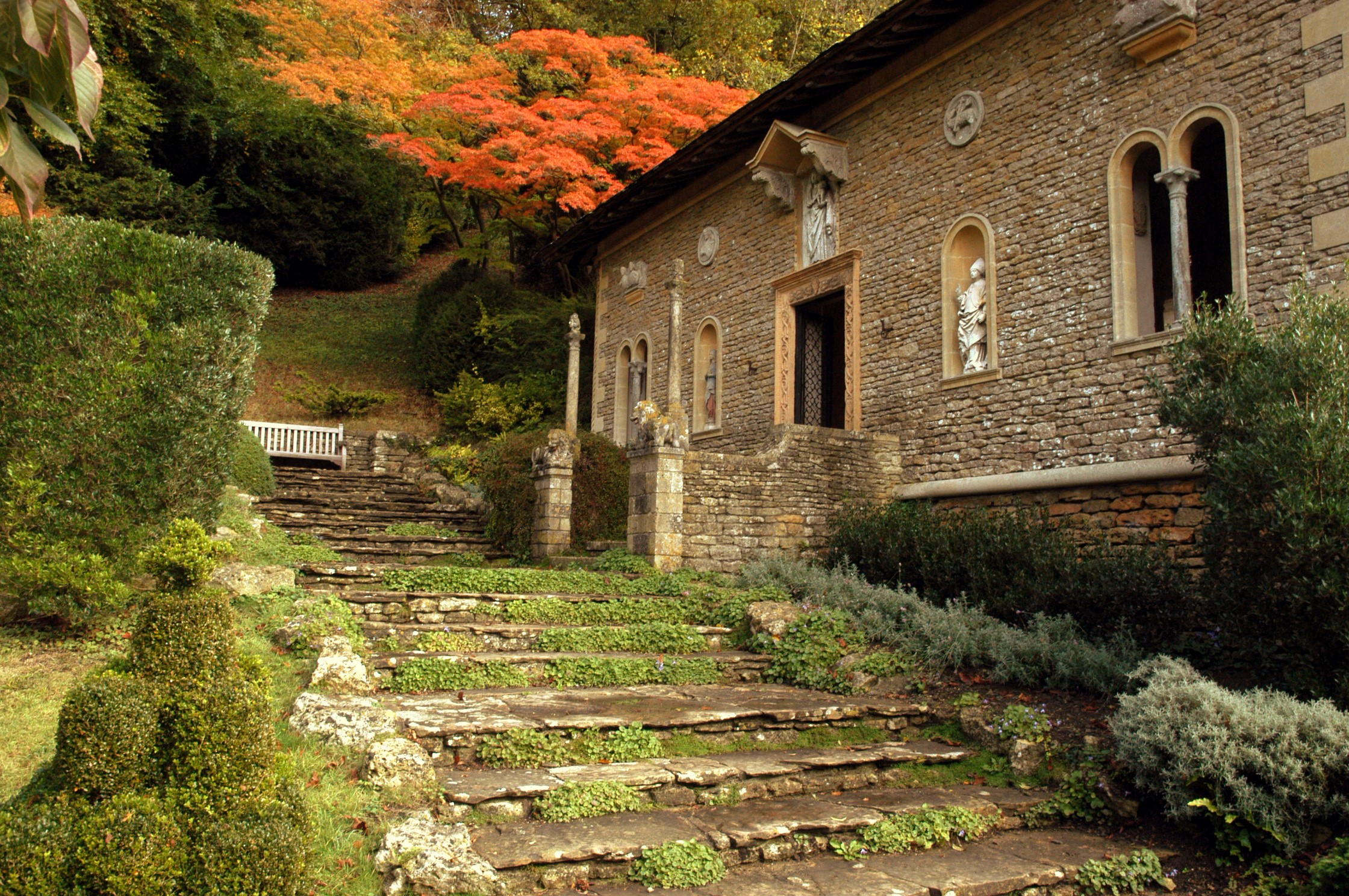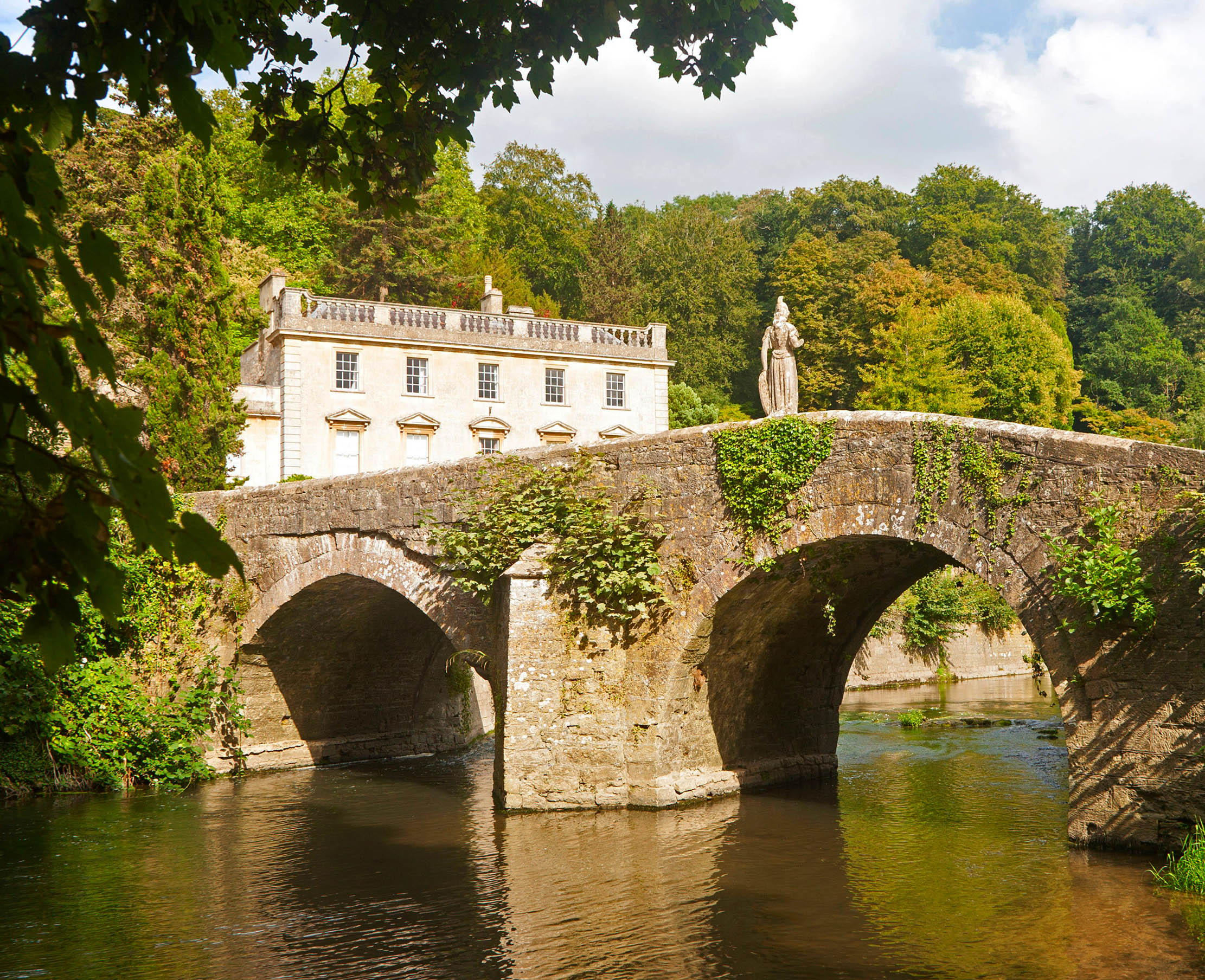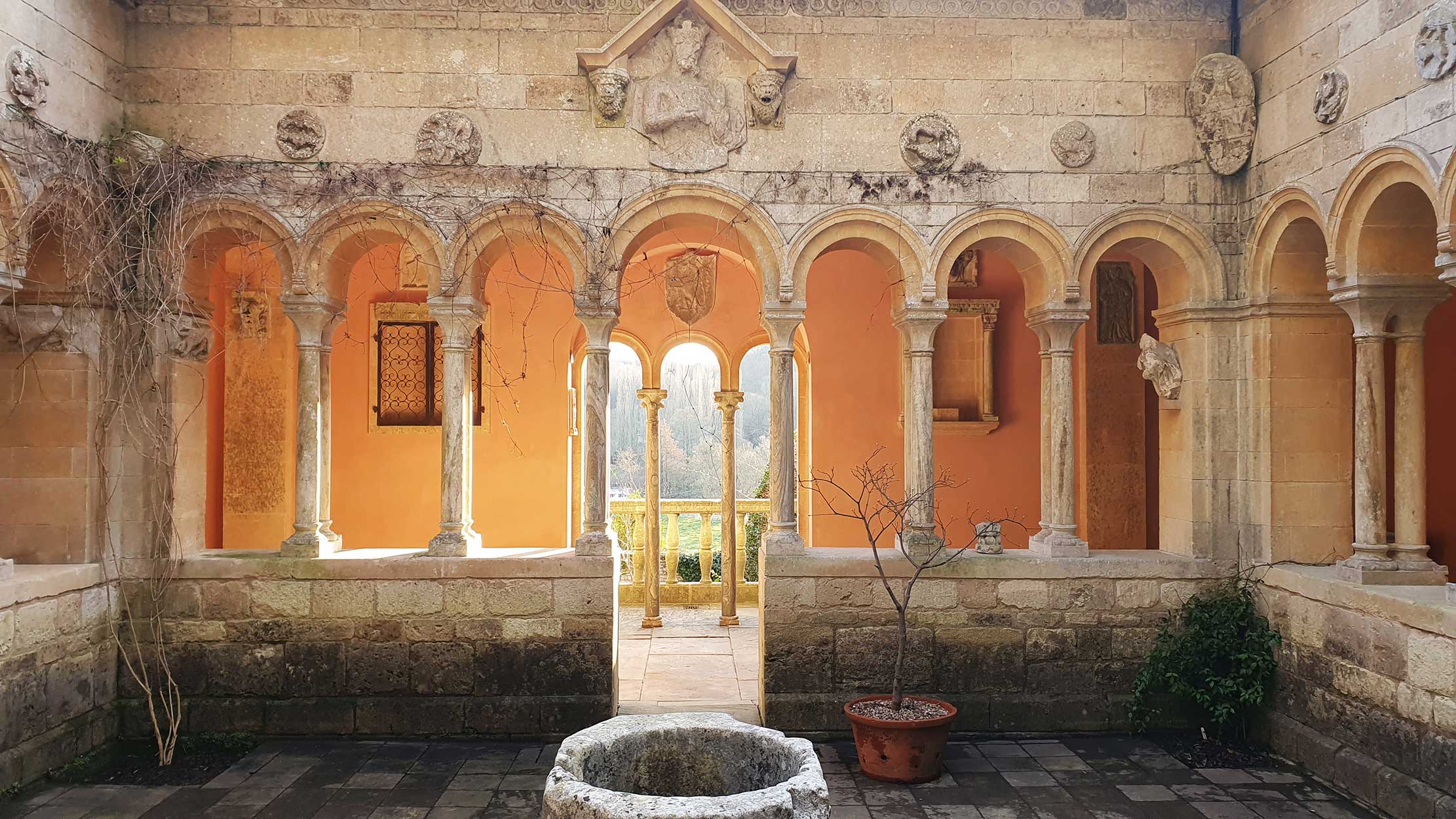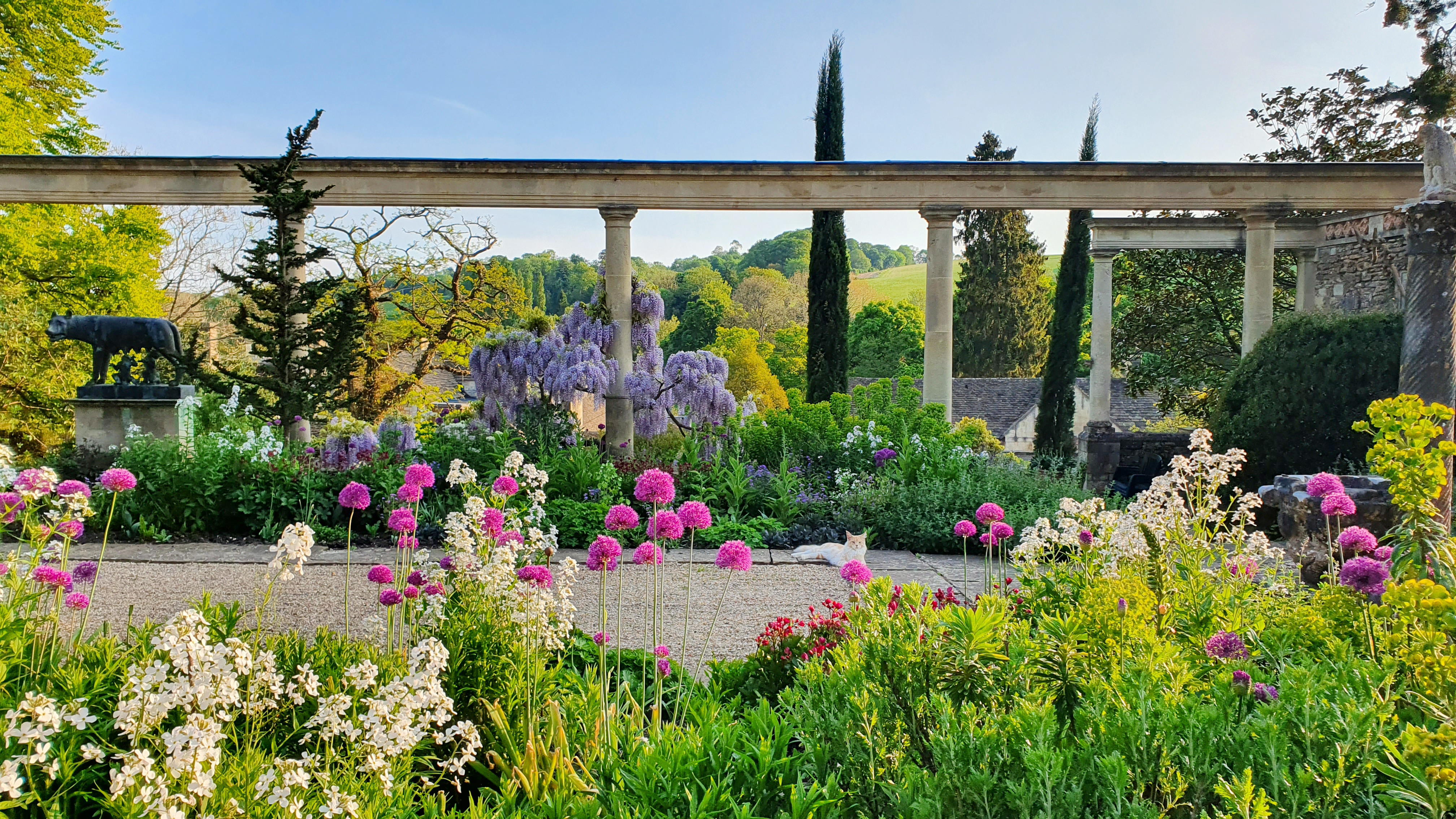Troy Scott Smith: Iford Manor has been a labour of love — but Sissinghurst calls
Evolution, not revolution was the goal at Harold Peto’s Italianate garden at Iford Manor, says Troy Scott Smith, who feels both a sense of loss and joy as he moves to Sissinghurst.


Historic gardens such as Iford are works of art that need careful handling. It would be all too easy for the distinct vernacular of these celebrated gardens to be diluted or lost and for them to become either museum pieces or super- ficial tourist attractions pandering to the whims of the day tripper. Rather than attempting to freeze a garden in time, preservation should focus on capturing a garden’s story in a way that is authentic to its history, yet is meaningful for generations to come.
When I arrived at Iford in autumn 2019, my first priority was to establish an ideal, a recipe to follow, if you like. This Conservation Management Plan (CMP) is based on a thorough understanding of Iford and its creator, Harold Peto, together with the layers of change and renewal that have followed since. This ideal sets out in detail the horticultural and aesthetic intentions, as well as the special qualities of the place as a whole and of each area within it.
The plan allowed me, thereafter, to garden at Iford in a fluid and instinctive way, responding to the site and seeking to promote rather than to inhibit change. Evolution, not revolution was the goal — and not one single thing, rather an accumulative effect, a result of a series of interventions that, added together, are significant. It is the nature of change that matters, not change itself.
Two years later and the garden at Iford is well placed to face the future: essential pruning is complete, tired plants have been propagated and removed, occluded views have been restored, a new planting palette, reflecting the Mediterranean weft of the garden, has been considered and systems of ‘good gardening’ are in place.
As I prepare to return to Sissinghurst in Kent, I feel a sense of loss that my time at Iford is to be unintentionally cut short. I shall not see the swathes of flowering cyclamen lifted and replanted to pour down the hillside or the sheets of wild narcissi in the orchard, seeded from those first few bulbs we planted in 2019, or the canopy of cherries, planted as part of the Sakura project, whose blossom in time will fill the entire valley. A personal loss, yes, but also great joy of knowing that I have helped shape Iford’s future for many, many years to follow.
As I sit at my desk reflecting on Iford, my mind drifts from Peto to Vita and thoughts once again turn to Sissinghurst. A garden that, 30 years ago, taught me how to garden and a place I find difficult to be away from for long.
Sissinghurst is held dear in the hearts of millions of garden aficionados as the quintessential romantic 20th-century English country flower garden. Once a Saxon pig farm, the land and Tudor buildings were used as a prison in the 18th century and a poor house in the early 19th century, before, by 1855, the estate was transformed into a Victorian farm.
Sign up for the Country Life Newsletter
Exquisite houses, the beauty of Nature, and how to get the most from your life, straight to your inbox.
Vita Sackville-West and her husband, Harold Nicolson, bought Sissinghurst in 1930 and spent 30 years or so turning it into an academy of beauty, described by their son Adam Nicolson as a place, ‘where culture inculcates the ideas of fine carelessness’.
When Vita first had laid eyes on the empty plot, she wrote that: ‘It caught instantly at my heart and my imagination. I fell in love; love at first sight...’
The Nicholsons agreed from the start the kind of garden they wanted, described by Vita as ‘strict formality of design, with the maximum informality in planting’.
Vita’s garden had an ease that comes from Nature and gardener working in harmony. The pulse of the garden beat slowly; it was nourished by patience and was rich in emotion and intimacy. A kind of haphazard luxuriance permeated the whole place. The walls were encrusted with roses foaming and frothing in abundance. Everywhere, fat cushions of plants generously spilled and sprawled over paths lending a lavish and romantic quality.
This abundance was part of Vita’s distinctive planting philosophy. ‘Cram, cram, cram, every chink and cranny,’ she wrote on May 15, 1955. ‘My liking for gardens to be lavish is an inherent part of my garden philosophy. I like generosity wherever I find it... I hate to see things scrimp and scrubby.’
Once individuals such as Vita or Peto die, it is easy for the prevailing character and spirit of their gardens to be overlaid, gradually diluted, and eventually lost. At Iford, due to the sensitive and careful treatment, over several decades, by the Cartwright-Hignett family, the tone of the garden is easily recognisable as Peto’s. It was this embedded sense of place that captivated me on my first visit to Iford 27 years ago and it remains the intangible sense of place that continues to captivate, not only me, but scores of others today and, one hopes, long into the future, too.
Troy Scott Smith has just returned to Sissinghurst, Kent, as head gardener

Iford Manor: How Harold Peto created a Wiltshire masterpiece that 'that turns the ordinary into the extraordinary'
Troy Scott-Smith, head gardener at Iford Manor, tells the tale of how the great Harold Peto found Iford and used

The stone-by-stone project to rescue the cloisters at Iford Manor: 'We've saved it from collapse'
One of Wiltshire's prettiest houses, Iford Manor, has been recognised by Historic Houses for its fabulous restoration of the medieval-style

Credit: William Cartwright
Iford Manor: How to introduce modern touches into a historic garden
Nowhere are Harold Peto’s talents as a gardener and architect more apparent than the gardens and grounds of Iford Manor,
-
 380 acres and 90 bedrooms on the £25m private island being sold by one of Britain's top music producers
380 acres and 90 bedrooms on the £25m private island being sold by one of Britain's top music producersStormzy, Rihanna and the Rolling Stones are just a part of the story at Osea Island, a dot on the map in the seas off Essex.
By Lotte Brundle
-
 'A delicious chance to step back in time and bask in the best of Britain': An insider's guide to The Season
'A delicious chance to step back in time and bask in the best of Britain': An insider's guide to The SeasonHere's how to navigate this summer's top events in style, from those who know best.
By Madeleine Silver